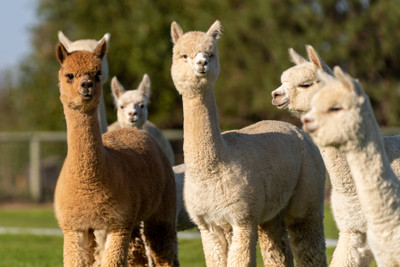What Is The History of Alpacas?
Alpaca by Design on May 16th 2023
Alpacas are cute, furry animals that are native to the Andes Mountains of South America. They are known for their soft wool, which has been highly valued by humans for thousands of years. In this blog post, we will take a look at the fascinating history of alpacas, from their origins to their present-day status as beloved domestic animals.
Origins and Domestication
Alpacas are a member of the camelid family, which also includes llamas, guanacos, and vicuñas. The wild ancestor of the alpaca is believed to be the vicuña, a small, wild South American camelid that lives in the high Andes. Vicuñas have been hunted by humans for their wool for thousands of years, and it is likely that some of these animals were eventually domesticated and bred to create alpacas.
The domestication of alpacas is believed to have taken place around 5,000 years ago in the region that is now Peru. Alpacas were raised by the indigenous people of the Andes for their wool, which was used to make clothing, blankets, and other textiles. Alpacas were also used as pack animals, carrying goods over the steep, rugged terrain of the Andes.
Spanish Conquest and Decline
In the 16th century, Spanish conquistadors arrived in South America and quickly conquered the Inca Empire, which was centered in modern-day Peru. The Spanish were impressed by the quality of alpaca wool and began to export it to Europe. However, they also introduced their own domestic animals, such as sheep and cattle, which competed with alpacas for grazing land.
As a result of this competition and other factors, such as disease and overgrazing, the number of alpacas in South America declined sharply. By the 20th century, the population of alpacas had fallen to just a few thousand.
Resurgence and Modern-Day Status
In the 1960s, efforts were made to revive the alpaca industry in South America. The Peruvian government launched a breeding program to improve the quality of alpaca wool, and international organizations began to promote alpaca wool as a luxury fiber. Today, there are over 3 million alpacas in South America, and the alpaca industry is a significant source of income for many rural communities.
Alpacas are now bred for their wool, which is prized for its softness, warmth, and hypoallergenic properties. Alpaca wool is used to make a wide range of products, including sweaters, scarves, hats, and blankets. Alpacas are also raised for meat, which is a traditional food in some Andean communities.
In addition to their economic value, alpacas are also beloved as pets and domestic animals. In recent years, alpacas have become popular attractions at petting zoos and farm parks in Europe and North America. Their gentle nature, adorable appearance, and tendency to hum and spit (when they feel threatened) make them popular with children and adults alike.
Conclusion
The history of alpacas is a fascinating story of human-animal interaction, from their domestication in ancient times to their resurgence in the modern era. Alpacas have played an important role in the culture and economy of the Andes for thousands of years, and their wool is still highly valued by people around the world. As pets and domestic animals, alpacas bring joy and companionship to many people, and their popularity shows no signs of waning.
Whether you're interested in the history of textiles, the culture of the Andes, or just looking for a cute and cuddly pet, alpacas are definitely worth learning more about. So why not take the time to visit a local alpaca farm or attend an alpaca festival to experience these delightful creatures firsthand? You'll have the opportunity to learn more about their history, interact with them, and maybe even get your hands on some luxurious alpaca wool products.
In conclusion, the history of alpacas is a testament to the resilience and adaptability of these incredible animals. From their humble origins as wild vicuñas to their role as cherished domestic companions, alpacas have endured centuries of change and emerged as beloved creatures in our modern world. So, the next time you wrap yourself in a cozy alpaca wool blanket or meet a friendly alpaca face-to-face, take a moment to appreciate the rich history that has brought us to this point. Alpacas truly are remarkable creatures that continue to capture our hearts with their charm, wool, and gentle nature.
-

